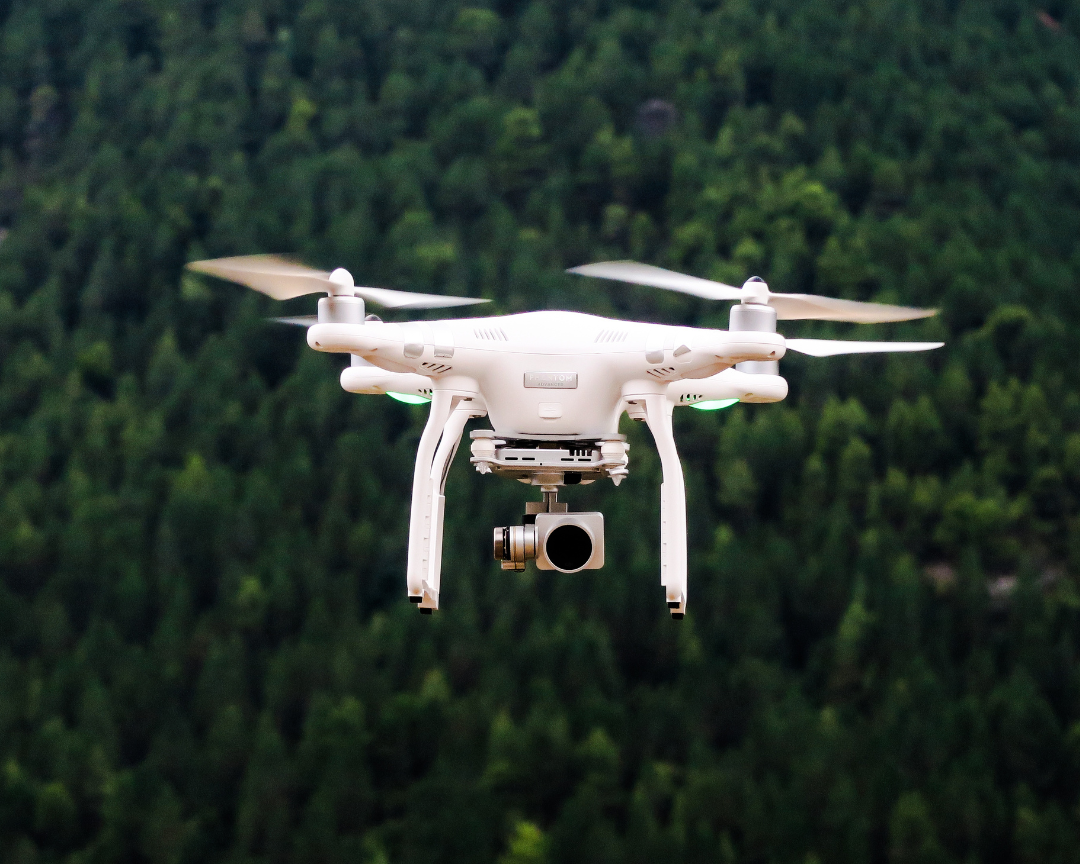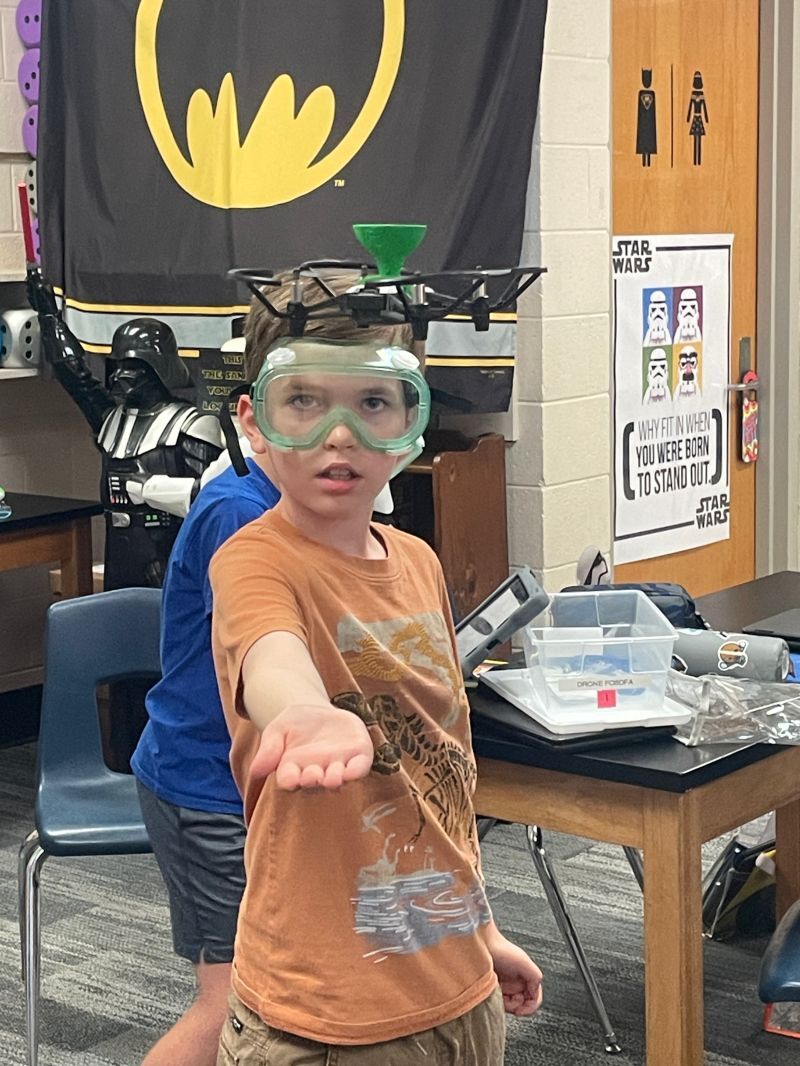Even without artificial intelligence, drone technology is pretty cutting-edge. Drones can deliver goods, conduct maintenance inspections, and collect valuable data. Some can even pilot themselves without any human control or interference!
Many researchers believe that the future of drone technology is AI. There are limitless possibilities for what AI and drones could accomplish together. From improving natural disaster response efforts to aiding in conservation research, AI has the potential to make drones even more useful and innovative.
In this article, we’ll explore the different ways drones and AI are beginning to intersect. Keep reading to learn more about the drones of the future!
Artificial Intelligence in Drones
The goal of AI drone development is to increase the autonomy of drones in order to make them more versatile and valuable.
AI drones could potentially pilot themselves for longer periods of time, complete tasks without human supervision, and perform assessments and analyses with the data they collect.
How AI-Based Drones Work
Let’s go over some of the ways researchers are developing AI in drones.
Object Recognition Software and Drones
Object recognition software allows drones to focus on or complete tasks related to specific objects detected by their camera and sensor technology.
This capability could be useful for a variety of applications, including:
- Fire prevention: Drones could detect the presence of forest fires earlier than traditional methods. This would allow for faster information collection, the identification of safe access points, and improved strategies for fire suppression.
- Search and rescue: AI drones could be used to improve search and rescue operations by sending notifications and real-time footage when a human is detected in the area of interest. This could result in reduced cost of missions, reduced recovery time, and more lives saved.
- Water pollution: Object detection software in drones can be used to monitor vast swaths of the ocean for pollutants and overall ecosystem quality. This could lead to faster pollution identification, reduced cost of surveying, and improved ecosystem health.
GPS Software and Drones
Entirely self-piloting UAVs could be a reality in the very near future. These drones will be able to navigate to a direction point autonomously.
Self-piloting drones are able to remain in flight and on trajectory without human interference, which would allow them to collect information more frequently, routinely, and consistently. This could have a wide range of benefits, namely reducing the cost of research and allowing for a more robust collection of data.
Voice Control Drones
By combining voice control software with UAVs, researchers are able to develop more accessible drones that are applicable to a wider range of needs.
Studies have found that voice-activated drone control is a less natural way to pilot such vehicles. However, drones in the experiment were able to accurately respond to commands between 74 and 100 percent of the time, depending on the method and language used.
This research suggests that voice control could be used as an effective failsafe for self-piloting drones.
Companies Using AI in Drones
Because of their potential to improve lives, reduce costs, and generate revenue, many companies are investing in AI drone innovation. Here are a few exciting examples:
Volocopter
Air mobility innovation company Volocoptor has invested a lot into developing the next generation of time-saving and life-saving AI drones.
One of their recent projects involved supporting environmental research projects with data-collecting UAVs. These drones perform in much the same way as traditional data collection drones—they fly over the whales and collect samples as the whale’s blow.
One key difference, however, is that Volocoptor’s drones are equipped with analysis software that allows them to measure, record, and analyze information while they are collecting the data.
This technology could be developed further to eventually provide real-time suggestions to researchers about the quality of the samples obtained. With such information, researchers could save time and money by ensuring each sample returned to them is of the highest quality.
Skydio
Skydio has been investing in AI drone technology development to improve the lives of business owners, increase public safety, and promote creativity in technology innovation.
Their self-piloted drone project has been among the leading examples of autonomous UAVs. It is capable of identifying and following a subject for a prolonged period of time.
In order to be successful, these drones have had to navigate obstacles and film a continuous shot of a single subject. Skydio’s drones are able to perform these tasks, opening the door to more possibilities.
AI and UAVs
AI-based drone technology has been gaining traction over the past few years. Through research, developers have begun creating solutions to some big challenges.
Some of the solutions include:
- Detection, counting, segmentation, and tracking of objects and living beings
- Thermal detection and analysis
- Compliance confirmation in businesses and public spaces
- Face detection and recognition
- Fire and smoke detection
- License plate reading
- Damage detection on buildings and vehicles
There are many exciting possible applications of AI drone technology, and we are only just beginning to scratch the surface.
Are Drones Machine Learning?
Self-piloted UAVs need to be able to make decisions without human interference. More than that, the decisions need to consider a variety of factors in order to protect the equipment, environment, and human safety.
There are many factors that could prevent self-flying drones from successfully completing a task. One method researchers have found success with is a decision-making algorithm based on deep reinforcement learning.
The algorithm uses previously successful missions to inform its decisions and maneuver interactive environments. This AI-informed approach allows UAVs to continuously learn and approve their ability to navigate airspace.
Drones and the Future of AI-Fueled Tools
AI is the future of drone technology. Together, these two innovative tools have the potential to help researchers and workers solve some of the biggest problems facing the world.
At Drone Legends, we believe that building a better future begins with educating the next generation to be thoughtful and bold in their use of technology. Our high-tech STEM curriculum promotes compassion and courage while keeping students engaged with exciting robotics.
If you want to enrich your students with employable STEM skills that will support and inspire their future education, contact Drone Legends.




